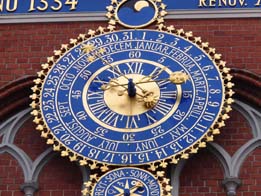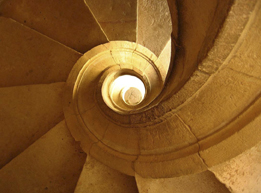Lesson 2
1. Lesson 2
1.9. Connect
Module 1: Sequences and Series
Open the Lesson 2 Assignment you saved in your course folder at the start of this lesson. Print one sheet of Polar Grid Paper. Complete the assignment.
Project Connection
In Module 1 Project: Financing Your Dreams, complete Project Connection 2: Budgeting.
![]() Save all of your work in your course folder. You will build on your work in each lesson.
Save all of your work in your course folder. You will build on your work in each lesson.
Going Beyond

© bofotolux/18870189/Fotolia
You have already seen arithmetic sequences applied in several different real-world contexts. These contexts include simple interest, Archimedes' Spiral, and auditorium seating. In fact, you can model situations using an arithmetic sequence whenever you discover a pattern of repetitive addition.
You will now investigate perpetual calendars, another application of arithmetic sequences. Can you figure out what the common difference is when an arithmetic sequence is used to model a calendar?
Part A
- Find a calendar for the current year. For the first two months of the calendar year, construct a table that shows which days of the year fall on a Thursday. Your table might look like the following:
Thursday Day of the Year 1st 3 2nd 10 3rd 4th 5th 6th 7th 8th
- Graph the data from the table. Show the independent values (left-column data) on the horizontal axis and the dependent values (right-column data) on the vertical axis.
- Determine the general term, tn, that relates the day of the year to the Thursday position.
Part B
Check the Internet to learn more about perpetual calendars. Try these questions to help you begin your investigation:
- If January 1 occurs on a Thursday this year, what day of the week will January 1 land on next year? Does the answer depend on any other factors?
- When do leap years occur? How can you determine if a particular year is a leap year?
- How many one-year calendars does a perpetual calendar consist of?
- What are the steps used to calculate the day of the week for a particular date?
- What are each of the World Calendar, the International Fixed Calendar, and the Pax Calendar?
Your search might lead to other questions.
![]() Save your work in your course folder.
Save your work in your course folder.

